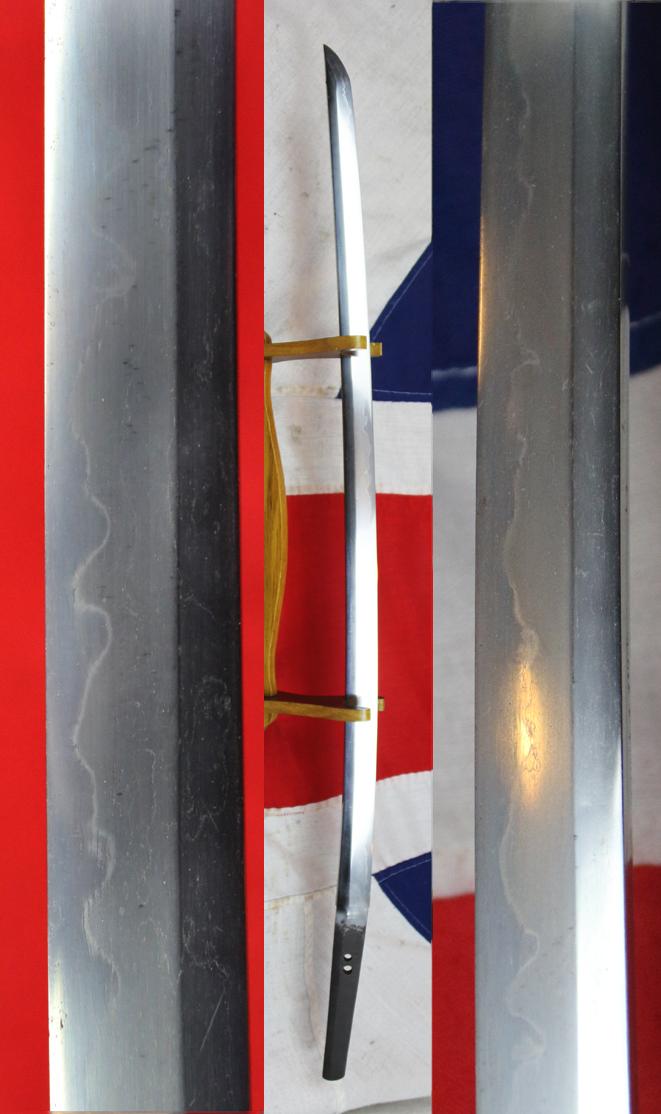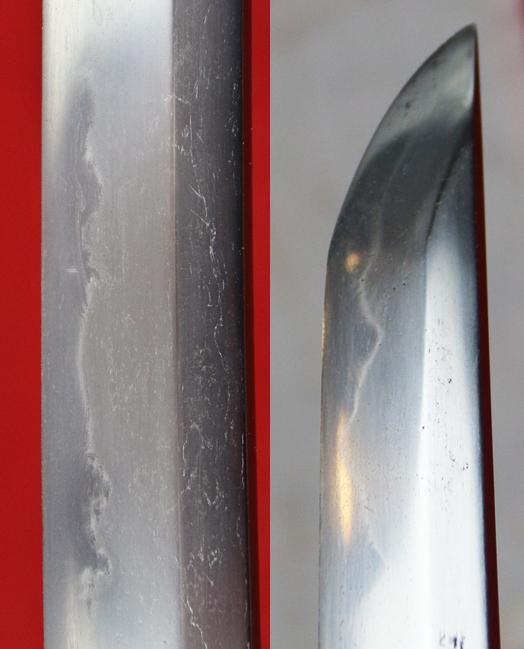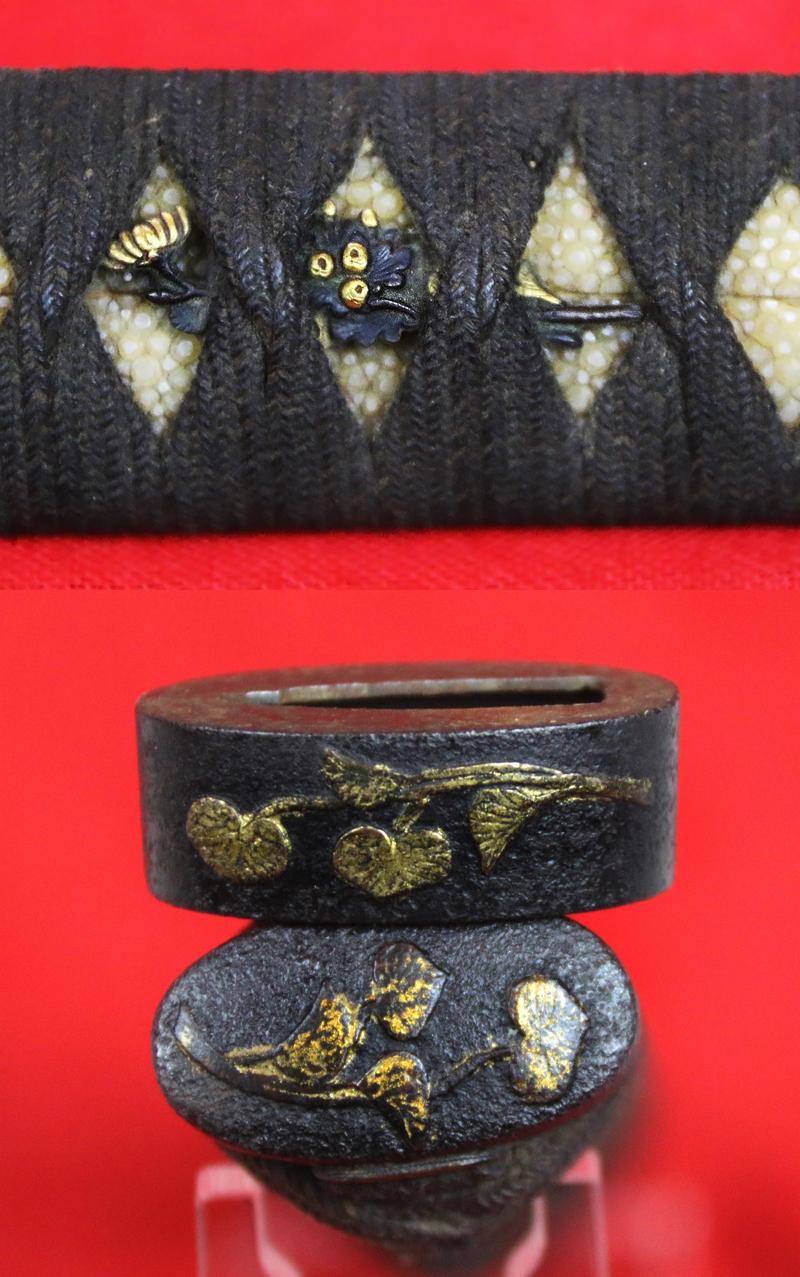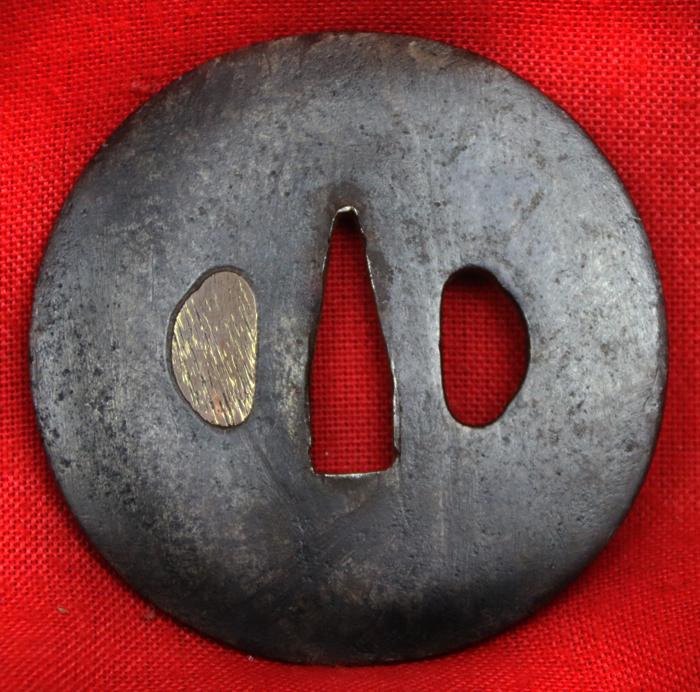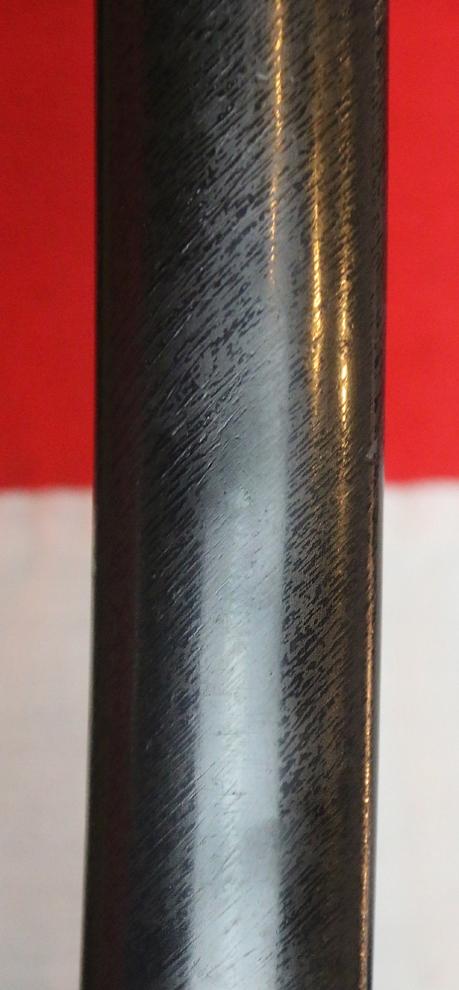A Most Attractive 500 Plus Year Old Samurai Battle Katana With All Original Edo Mounts,
Shibui mounted in all its original Edo period mounts and saya. Higo iron fushigashira mounts, decorated with takebori gold aoi leaves. Tetsu round tsuba with pierced kozuka and [gilt copper filled] kogai hitsu-ana. The original Edo saya lacquer is simply beautiful, in two shades of black with an intricate fine rainfall pattern within the design. The menuki under the Edo silk binding, are patinated takebori flowers with pure gold highlights. The blade has a beautiful undulating hamon pattern of considerable depth.
Shibui is a term that effectively translates to ‘quiet’ , it is a reference to a sword that has a relatively subdued look as it concentrates on high quality yet subtle elegance, as it is a sword entirely concentrating on combat and less on flamboyant display. Of course all samurai swords were designed for combat, often despite being mounted as works of art, often with fantastic quality fittings worthy of Italian Renaissance jewels, such as the European equivalent work by the Italian master Cellini, but they would be for samurai eager to display their status in the elite hierarchy of the samurai class, such as daimyo. The swords mounted shibui were for the samurai of far more serious nature, dedicated to their more basic standards of bushido, the art of the ultimate warrior, with little or no interest in displays of rank. A samurai of the highest skill but preferring the anonymity of almost being invisible to unwanted attention.
Samurai endured for almost 700 years, from 1185 to 1867. Samurai families were considered the elite. They made up only about six percent of the population and included daimyo and the loyal soldiers who fought under them. Samurai means one who serves."
Samurai were expected to be both fierce warriors and lovers of art, a dichotomy summed up by the Japanese concepts of bu [to stop the spear] exanding into bushido (the way of life of the warrior) and bun (the artistic, intellectual and spiritual side of the samurai). Originally conceived as away of dignifying raw military power, the two concepts were synthesised in feudal Japan and later became a key feature of Japanese culture and morality. The quintessential samurai was Miyamoto Musashi, a legendary early Edo-period swordsman who reportedly killed 60 men before his 30th birthday and was also a painting master. Members of a hierarchal class or caste, samurai were the sons of samurai and they were taught from an early age to unquestionably obey their mother, father and daimyo. When they grew older they may be trained by Zen Buddhist masters in meditation and the Zen concepts of impermanence and harmony with nature. The were also taught about painting, calligraphy, nature poetry, mythological literature, flower arranging, and the tea ceremony. 40 inches long overall. 28.5 inch long blade, from tsuba to tip., The blade is in super condition for its age, with just a few wear marks, and pit marks on the mune back edge near the boshi. The saya lacquer has some natural age craking at the base
Code: 24217
6450.00 GBP



